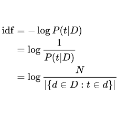This paper investigates the language of propaganda and its stylistic features. It presents the PPN dataset, standing for Propagandist Pseudo-News, a multisource, multilingual, multimodal dataset composed of news articles extracted from websites identified as propaganda sources by expert agencies. A limited sample from this set was randomly mixed with papers from the regular French press, and their URL masked, to conduct an annotation-experiment by humans, using 11 distinct labels. The results show that human annotators were able to reliably discriminate between the two types of press across each of the labels. We propose different NLP techniques to identify the cues used by the annotators, and to compare them with machine classification. They include the analyzer VAGO to measure discourse vagueness and subjectivity, a TF-IDF to serve as a baseline, and four different classifiers: two RoBERTa-based models, CATS using syntax, and one XGBoost combining syntactic and semantic features. Keywords: Propaganda, Fake News, Explainability, AI alignment, Vagueness, Subjectivity, Exaggeration, Stylistic analysis
翻译:暂无翻译




